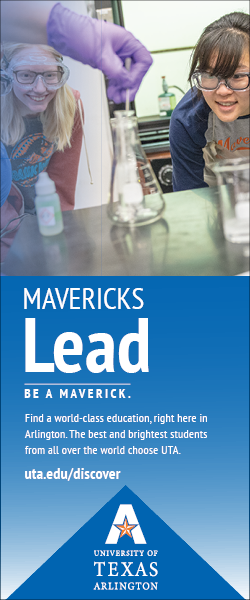 With this month’s focus on entrepreneurship, here’s some recently developed data about our community that those taking the plunge into a business career need to know to support their decision making.
With this month’s focus on entrepreneurship, here’s some recently developed data about our community that those taking the plunge into a business career need to know to support their decision making.
These characteristics are important when determining if the demographic, social and economic profiles of potential clients and customers will support whatever business endeavor is being pursued.
Beyond business purposes, it also is a pretty good look at who we are.
The average Arlington resident is female, just under the age of 33, is white, non-Hispanic, has at least a high school degree, makes $53,574 in annual household earnings, commutes almost 27 minutes to work, and the majority work outside the city.
Top employers, with the number on their payrolls, include the school district with 8,200, UT Arlington at 5,300, the General Motors plant with 4,500 car makers, Texas Health Resources with just over 4,000, Six Flags Over Texas has 3,800, The Parks Mall next at 3,500, GM Financial employs 3,300, the City of Arlington with 2,500, Chase Bank approaching 2,000 and the Texas Rangers with about 1,900.
In addition to the Arlington school district, there are four others, including Mansfield, Hurst-Euless-Bedford, Fort Worth and Kennedale.
Total population in the ever-growing city is approaching 400,000, making it the 48th largest in the country and seventh largest in Texas. By comparison, the population 10 years ago was about 333,000.
There are 2.8 persons per household, an increase of just over six percent since 2000.
The city’s racial makeup is also changing. Currently, the white population, including Hispanic persons, stands at 65 percent, African Americans approach 21 percent, and Asians account for seven percent.
Poverty rates are declining. Arlington’s stands at less than 17 percent of the population compared to 18 percent in Fort Worth and 23 percent in Dallas.
Nationally, the owner-occupancy rate has been decreasing, having fallen by about four percent since 2000. While Dallas is following this trend, owner occupancy rates in Fort Worth and Arlington have increased since 2000, currently standing in the mid 50 percentile range.
The average home sales price has increased significantly since 2000. Then it was $120,000, and now exceeds $192,000.
Unemployment peaked after the 2008-09 recession at about eight percent. Today it’s at the three percent level – considered the measure of full employment.
Almost 85 percent of the population are high school graduates, and almost 30 percent have gotten their bachelor’s degree or higher.
Arlington’s workforce profile has experienced some key changes since 2000. Residents in management, business, science and arts occupations, as well as sales and office occupations, decreased, while service occupations and natural resources, construction and maintenance occupations increased during the same time period.
Since 2000, there has been a decrease in both sales and office and management occupations and an increase in service occupations. Management/business/science and arts remains the majority occupation type for the city.
It will come as no surprise that the means of transportation to work for 82 percent of people is their personal automobile that they drive alone. About 13 percent actually carpool, and the number who work at home accounts for almost five percent pursuing their careers.
Of course, this data is not the only basis for pursuing a business activity, but it’s a start in helping to understand the potential for success in whatever field of work is being planned.
The data shared here all came from the City of Arlington website (arlingtontx.gov), and you can view it in greater detail with charts and graphs in addition to the actual numbers by logging in and entering “socioeconomic profile update” in the search field.
















